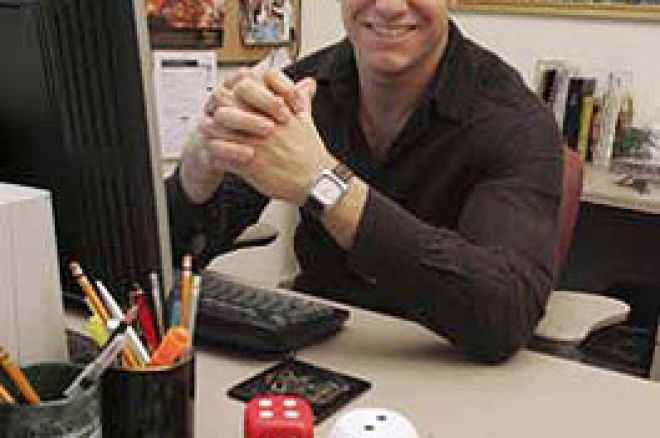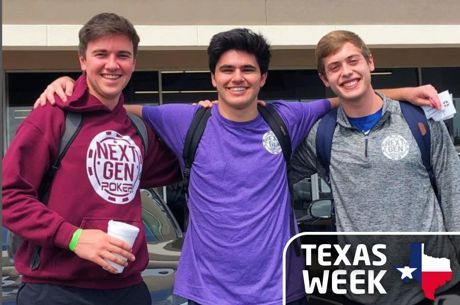Poker Archivist: The World Series of Poker Collection at UNLV

Dave Schwartz (Dr. Dave, with a Ph. D. in history from UCLA) is the coordinator of the Center for Gaming Research at the University of Nevada, Las Vegas (UNLV). A part of his duties has to do with overseeing the university's special collection on gaming. Within that section is the "Binion's Horseshoe Collection," a treasure trove for those interested in all aspects of the World Series of Poker.
The collection, donated to the university by Jack Binion, covers the WSOP from its start in 1970 to 2004. The extent of the collection is recorded as "9 linear feet (8 Hollinger boxes, 2 document boxes)."
According to Schwartz, dubbed "gaming's leading historian" by Global Gaming Business, documents include event proceedings, press releases, newspaper and magazine clippings, photographs, scrapbooks, event schedules and programs, participation lists, day-by-day results of play, players' brochures, audiocassette tapes, videotapes, promotional pamphlets, newsletters, display ads in both draft and finished form, awards, advertising budgets, a few pieces of business correspondence and invoices, drawings, published writings, handwritten notes, a movie script, business proposals, and two posters.
A significant amount of printed and photographic publicity material within the WSOP series focuses on women poker players and gender-related issues in the industry and covers the late 1970's and early 1980's. "Clippings and photographs about women's tournaments are especially valuable," Schwartz notes.
He goes on, "The collection has many resources for the history of the World Series of Poker and most have not been used for scholarly research to date."
It's mostly old fashioned, poke-around-in-boxes research. There is a press attendance list for the 1977 WSOP. The 1979 WSOP list includes an ad for Dutch Master cigars. Many contain press kits given out each year.
According to Schwartz, "I wouldn't hold my breath waiting for all of this to be digitized because it is being preserved as original documents."
However, Schwartz points out, "There are some historical things about the WSOP that are online now and available to anyone." He points to a virtual museum on the Center's website. One part of this is the "World Series of Poker: A retrospective." This can be found at gaming.unlv.edu/WSOP/welcome.html.
Here visitors can browse through a series of photo galleries, read from Benny Binion's oral history, examine annual summaries of the WSOP, be directed to writings about it, and find out more information about the tournament and the Horseshoe casino.
Some other special aspects of the collection: there are approximately 100 black and white photographs of the inaugural WSOP in 1970. There are inside and outside shots of the Horseshoe Casino, Binion's Montana ranch, Jack Binion doing promotional giveaways for the Horseshoe, and roadside billboards advertising the Horseshoe. The formats run the gamut from professional black and white 8 x 10 prints to color snapshots and amateur Polaroid's. There are also negatives and contact sheets in the photo collection.
There is another section on artwork: drawings, lithographs, and plaques and certificates of appreciation for the Binions' donations to philanthropic causes. There is a charcoal drawing of Jack Binion, artist unknown. There is a Stan Hunt cartoon drawing of Jack Binion, Jimmy the Greek, Jack Straus, and Puggy Pearson.
Still another section on audiovisual materials has video cassettes on the life of Benny Binion, the WSOP over various years, and the Poker Hall of Fame which the Binions initiated in 1979 and which fittingly includes Benny and Jack.
Schwartz points to the many press clippings that are in the collection. "These are pretty valuable and they have not been used much. They are not just from local papers. They are from all over the country."
Schwartz, a non-gambler ("I don't like it"), is the author of three books: Suburban Xanadu, about the rise of casino resorts, Uneasy Convictions: The American Pursuit of Gaming and the Wire Act, which analyzes American attempts at gambling prohibition and focuses on a federal law currently used to stifle Internet gaming, and the soon-to-be-published, Roll the Bones, a popular history of gambling throughout the world.
Born in Atlantic City, Schwartz worked in surveillance before heading west for graduate studies. He regularly speaks on the history of Las Vegas, the history of gaming, casino surveillance, gaming and technology, and related issues. In addition to speaking and chairing sessions at the Global Gaming Expo and gaming conferences in Asia and Australia, he has spoken to groups including the American Bar Association, the Casino Chip and Gaming Token Collectors Club, the Service Corps of Retired Executives, the Popular Culture Association, the Association for Information Technology Professionals, and American Mensa. He has lectured on the influence of Bugsy Siegel and Frank Sinatra on Vegas culture.
One researcher poking around in the collection is Jim McManus, author of Positively Fifth Street. McManus has a new book in the works on the history of poker.
With WSOP 2006 soon upon us, here is a gold mine of information about The Big One for historians, the media, and those who are serious about following the trail that has been laid down by the poker pioneers.
Ed Note: Be a poker pioneer, and sign up at Poker.com today.








